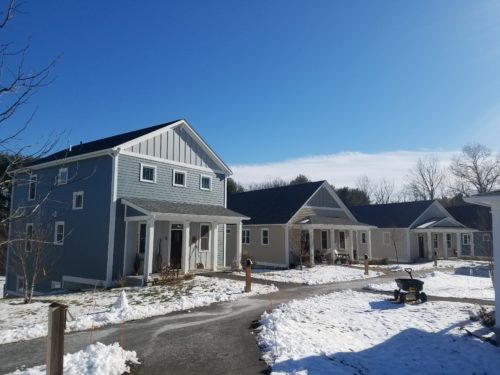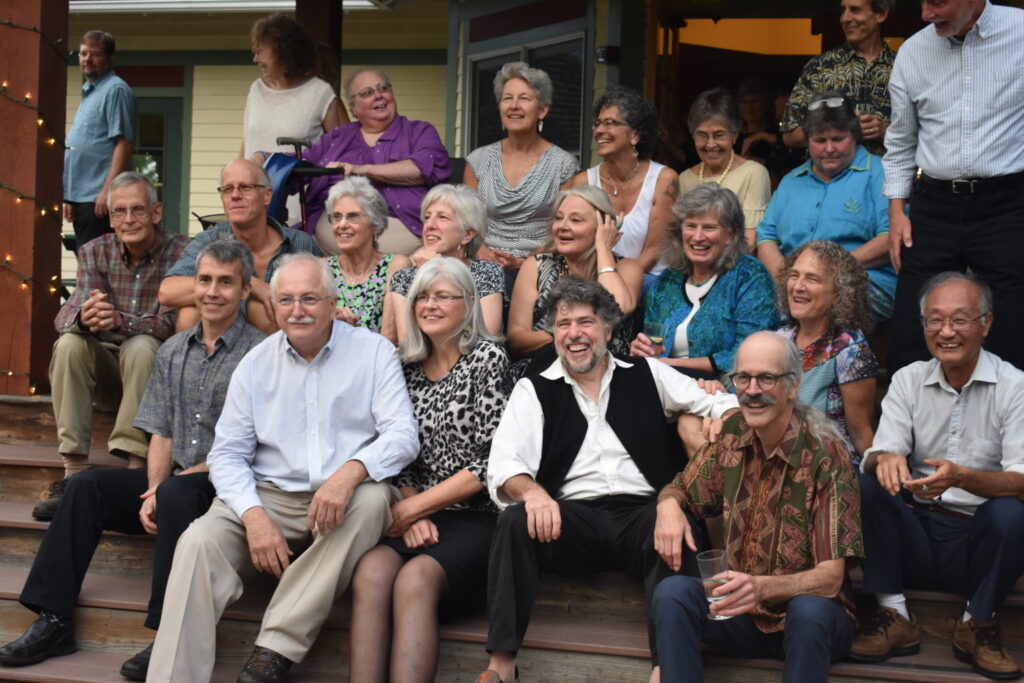Local Cohousing Communities Invite the Public to Open Houses on May 3

Common House at Cherry Hill Cohousing, Amherst, MA. Photo: Cherry Hill Cohousing
Source: Cherry Hill Cohousing
Cherry Hill Cohousing in North Amherst and Village Hill Cohousing in Northampton will offer tours of their communities on Saturday, May 3, to acquaint area residents and visitors with the features of cohousing and its benefits. Cherry Hill will offer tours at 11 a.m. and Noon; Village Hill will offer tours at 1 p.m. and 2 p.m. Reservations are not required but visitors should arrive within these time frames.
The two communities’ open house events are part of National Cohousing Week, sponsored by the Cohousing Association of the U.S. Dozens of other communities around the state and New England as well as across the country will offer tours in person and virtually. Tours and other virtual educational programs are listed here.

Cohousing communities are family-friendly, intentional, and collaborative housing developments that combine extensive common facilities with private homes to create supportive and vibrant neighborhoods. The design and neighborhood size (typically 20 – 40 homes) promote frequent interactions and close relationships. Neighbors socialize together, help with childcare, enjoy community meals, carry out maintenance tasks, share tools, and work collaboratively. The community is managed and maintained by community members, providing more opportunities for growing relationships.
Cohousing began in Denmark in the late 1960s and since then over 180 communities have been established across the U.S. with 20 more currently being built and dozens more in early formation.
Cohousing communities are legally organized as a condominium or cooperative but differ from for-profit developments as cohousing is a self-managed model utilizing cooperative decision making and committees handling community needs. . They can be found in rural, suburban, and urban settings, designed as stand-alone homes, townhouses or apartment buildings. All share extensive common amenities and many feature pedestrian friendly walkways with parking off to the side. A national directory of communities can be found here.
Cherry Hill, a 32-unit multi-generational development, organized 30 years ago and located at 120 Pulpit Hill Road in Amherst, was the first cohousing community in Massachusetts. Village Hill, located at 117 Olander Drive in Northampton, opened in 2021 with 28 units on the site of the former Northampton State Hospital.
More information about these communities can be found at the web sites below.
Cherry Hill Cohousing: https://web.cohousing.com/ Contact: seniorsincohousing@gmail.com
Village Hill Cohousing:https://www.villagehillcohousing.org/ Contact: info@villagehillcohousing.org
Additional Background
Why do People Choose Cohousing?
Cohousing fosters connection and community. Cohousing offers a supportive neighborhood for families to raise children and live among multiple generations. Physical spaces allow neighbors to easily interact with others just outside private homes. As social scientists confirm, we’re happier, healthier, longer living people, with daily social interactions and connections. “A wonderful aspect of cohousing is that you can enjoy your privacy and individuality, but you can simply walk outside to enjoy the connections all around you,” explains Peter Lazar, a member of Shadowlake Village Cohousing in Blacksburg, VA.
Cohousing is democracy in action. Cohousing communities collaboratively decide how they will live together and maintain their common facilities through participatory governance. Members work together to enrich their lives and improve their community and the larger neighborhood.
Cohousing communities are committed to sustainability with features such as composting and recycling, community gardens, children having playmates nearby, bike storage and sharing, carpooling, charging stations, solar panels and other green features as their budgets allow. “The intention is for communities to come together and share resources rather than pulling into your garage and closing the doors and never knowing your neighbors,” says Shawn Mulligan, who lives at Stone Curves in Tucson.
Cohousing addresses the change in household demographics. Cohousing neighborhoods offer a model for creating supportive networks based on proximity, something that will be ever more important as our national demographics continue to change, with an increasing number of singles, small families and elders.
Read more: A Better World is Possible. Cohousing Offers Community and a Different Way to Live (Amherst Indy)

